@chickamade $ whatis git
the stupid content tracker ...
git init
For the first 10 years of kernel maintenance, we literally used tarballs and patches, which is a much superior source control management system than CVS is.
There is no way to do CVS right.
Linus Torvalds
"Should I hacked together a stupid content tracker during my weekend so I can stop using this CVS/SVN shit?!?"
or so thought Linus, and over a few months ...
git was created, its design criteria:
- high performance
- non-linear development
- strong integrity
cache-concious design
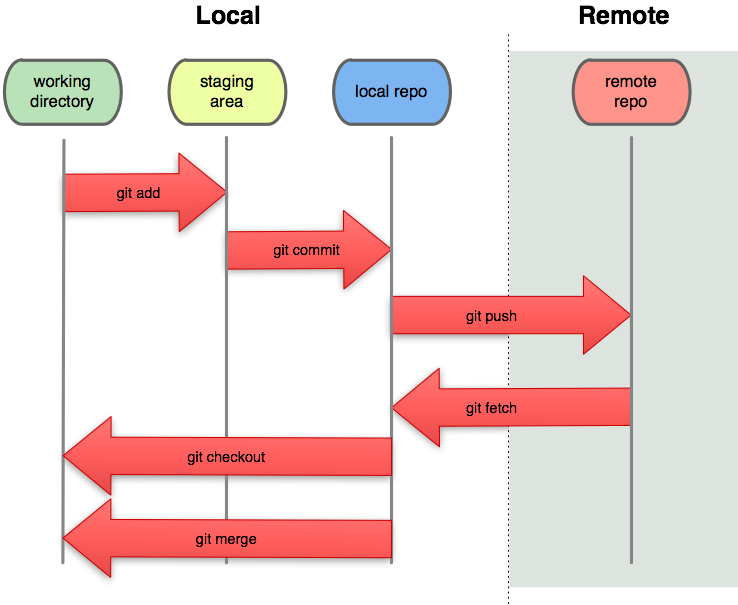
all repository are created equal !!!
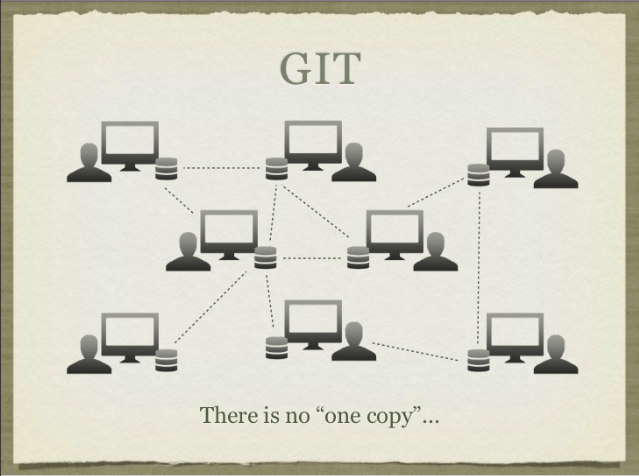
unless one is promoted to be the origin of all things (just like svn)

github: you may fork, but you must request to be pulled
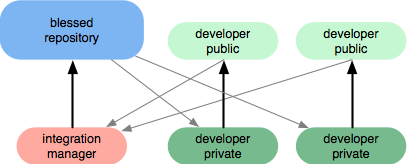
dictator: be careful of who you trust when merging!
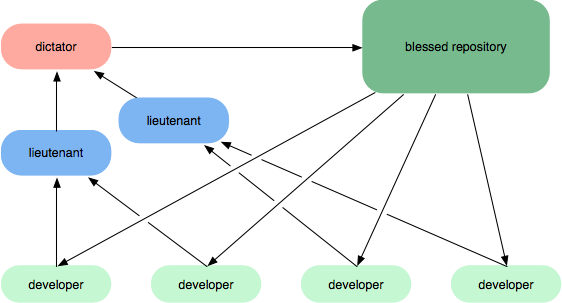
authentication of history
- each commit hash identify the snapshot content and the full associated history (more details comming)
- each tag is an immutable pointer to a commit hashes
- tags can be cryptographically signed with GPG
git engineering
- content-addressable object database
- Five (5) object types: blob, tree, commit, tag & branches
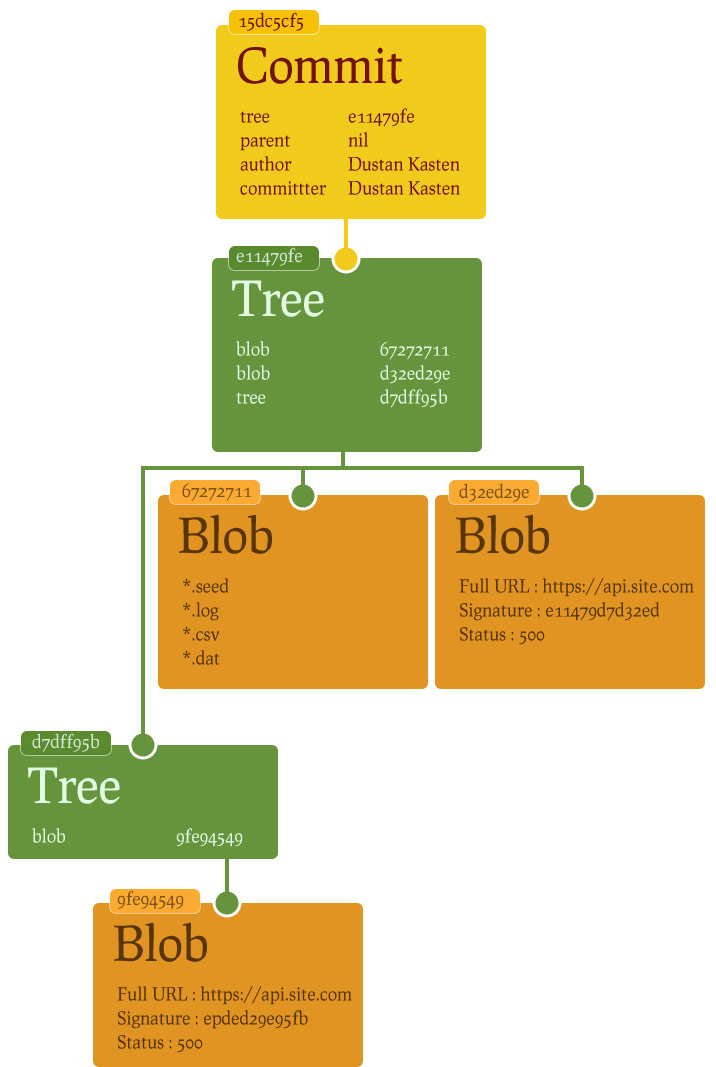
commits are snapshots, not deltas
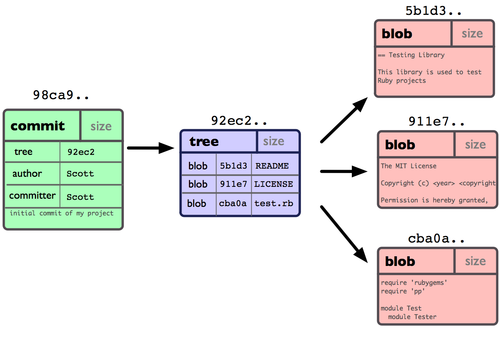
each commit points to its parent (knows its own history)
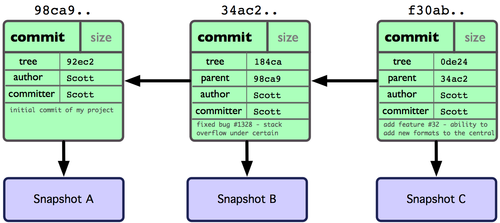
merge is a commit with N parents, retaining merge history

tags & branches are simply pointers to commits
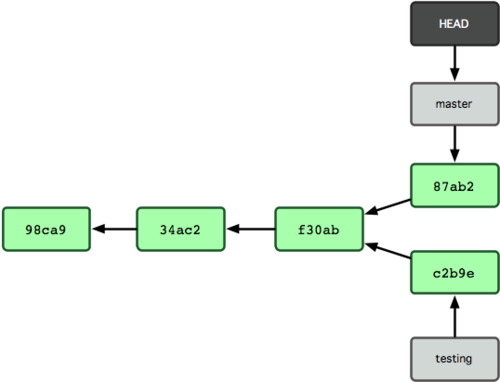
getting started
# git let you choose your display name $ git config --global user.name "Your Name" $ git config --global user.email you@yourdomain # to start new repo $ git init # to clone an existing one $ git clone https://github.com/git/git.git # for access control # you'll need to have a RSA/DSA key pair
basic operations

basic day to day work flow
- git checkout working-branch
- git fetch && git merge origin master
- vim work.py
- git diff
- git add work.py
- git commit -m 'meaningful messages'
- git push origin working-branch
partial commit with staging area (GUI recommended, e.g. GitX)
one afternoon, you made changes to 15 files; now you want to commit it in 3 parts!
$ touch foo.py bar.py bazzz.py $ git add foo.py bar.py # alternatively, staging patch by patch, interactively $ git add -p # this reset the staging area, but leaving the working tree dirty $ git reset
cleaning up the mess
# just unstage the file, don't overwrite working copy $ git reset HEAD -- file.py # checkout file from HEAD, overwriting working copy $ git checkout -- oldstuff.py # checkout subdir from old version, overwriting working copy git checkout v3.25.1 -- path/to/dir # i committed and pushed something is just broken :(, # this makes an extra commit that is # the negatation the changes in badcommit. $ git revert badcommit
viewing history
# idonethis! $ git log --author=Hai-Anh --since="12 hours ago" # list all commits since branch 3.24 $ git log v3.24..master >> release-notes.txt # did anyone touch the config file? $ git log v3.24..master -- src/config/settings.py # show file diff against old version $ git diff v2.5.1:foobar.py HEAD:foobar.py # grepping through history $ git grep XXX v3.25
too many branches???

use rebase for a linear history
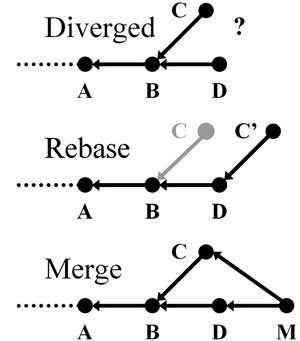
rebase rewrites history, use it for local changes only!
git is flexible, and get the job done
# forgot to commit a new file, but local changes not pushed yet
$ git add forgotten.py
$ git commit --amend
# i want that fix in my branch, now!
$ git cherry-pick ${sha1}
# i was working on feature X, made changes to 10 files
# now i must leave it aside to work on a hotfix
$ git stash save 'partial work on feature X'
$ git checkout -b v2.30.1-hotfix v.2.30.1 # work on hotfix
$ git checkout working-branch
$ git stash pop
where next?
- Choose a GUI: Official GUI clients list, my fav is GitX on OS X, if you use Eclipse then use EGit.
- Read the official tutorial ($ man gittutorial).
- Follow the git immersion, a guided tour of git.
- Read git magic, a more involved/advanced tour of git.
- Read the Pro Git book, it's quite short & sweet.
- RTFM
- Hangout on #git on irc.freenode.net.
brought to you by@chickamade, engineer at klamr.to.